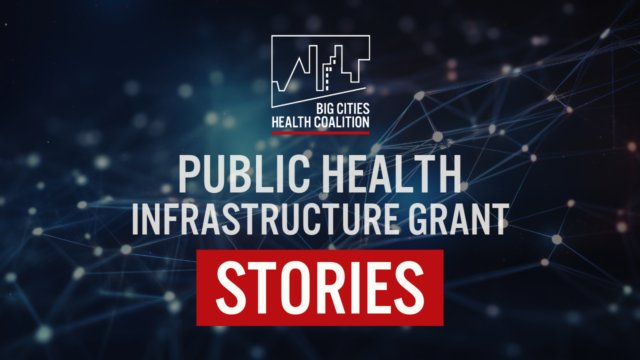Frontline Blog
Live Well San Diego: A model of community involvement and upstream public health investment
March 2025

San Diego County’s health department shows how investing in long-term solutions to chronic disease can have major impact.
Public health typically makes headlines during acute and emergency situations such as infectious disease outbreaks, a food recall, or a rise in drug overdoses. But public health also focuses on the long game of preventing problems before they start. Preventing chronic disease, in particular, takes years of multiple government agencies and community organizations working together to make health easier for everyone to attain.
For more than a decade, San Diego County has embraced this principle through Live Well San Diego, a long-term community-wide vision that shows how focusing on collaboration and sustained investment in upstream public health approaches can drive meaningful, measurable improvements in health, safety, and quality of life.
Live Well San Diego partners contributed to a 13% reduction in the number of deaths from preventable health conditions between 2007 and 2022.
A comprehensive approach to community health
Launched in 2010, Live Well San Diego is a vision for the region, focused on building better health, living safely, and thriving. It aligns the efforts of individuals, organizations, and government to help all 3.3 million San Diego County residents live well. Instead of addressing public health challenges in isolation, Live Well San Diego provides the framework for the county and its almost 600 officially recognized partners to take a collaborative, systems approach, tackling root causes such as poverty, educational disparities, and access to health services.
By focusing on prevention, data-driven decision-making, and cross-sector collaboration, the regional vision has seen substantial success. Over the past 15 years, the county has expanded access to preventive health care, improved community safety, and significantly reduced the number of children in foster care—all without relying solely on reactive, crisis-driven interventions.
The power of upstream investment
San Diego’s public health leaders recognized that chronic diseases—like heart disease and diabetes—often stem from other issues, including food access, housing stability, and ability to engage in physical activity. Through extensive collaboration with community partners and focused funding for community-based programs that address poor nutrition, lack of physical activity, and tobacco use, Live Well San Diego partners contributed to a 13% reduction in the number of deaths from preventable health conditions between 2007 and 2022.
One of the most striking examples of the Live Well San Diego vision is seen in the transformation of the county’s foster care system. Fifteen years ago, approximately 7,000 children were in foster care in San Diego County. Today, that number has dropped to around 1,500. This dramatic decrease is not due to a single policy change but rather a community commitment and sustained investment in keeping families together. Programs that provide early intervention, kinship care support, and focused social services have helped prevent family separations and ensure that children who do enter the system have better long-term outcomes.
Sustainable funding for lasting impact
A key factor in Live Well San Diego’s success has been its diversified funding approach. While the initiative initially received federal grants—including a $16 million Communities Putting Prevention to Work grant and a $15 million Community Transformation Grant—it has also secured state and county resources to ensure sustainability. More recently, the county’s Health and Human Services Agency received $27 million in CDC Public Health Infrastructure Grant funds to strengthen workforce capacity, improve foundational public health capabilities, and modernize data systems—efforts that support the Live Well San Diego vision.
This funding has allowed the county to move beyond short-term pilot projects and instead build enduring programs that address long-standing health disparities. Investments in public health infrastructure, workforce training, and data-driven policy decisions have enabled San Diego to respond proactively to emerging challenges while maintaining progress in core public health areas.
Lessons learned
San Diego’s experience offers valuable lessons for how we fund and organize governmental public health.


